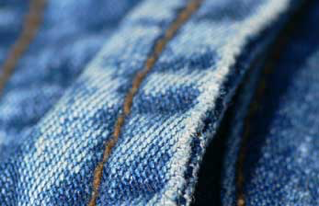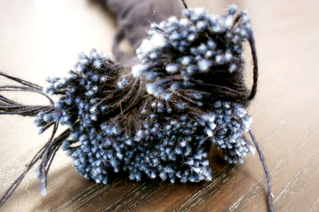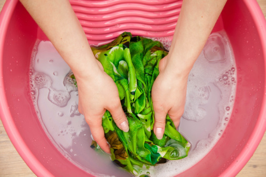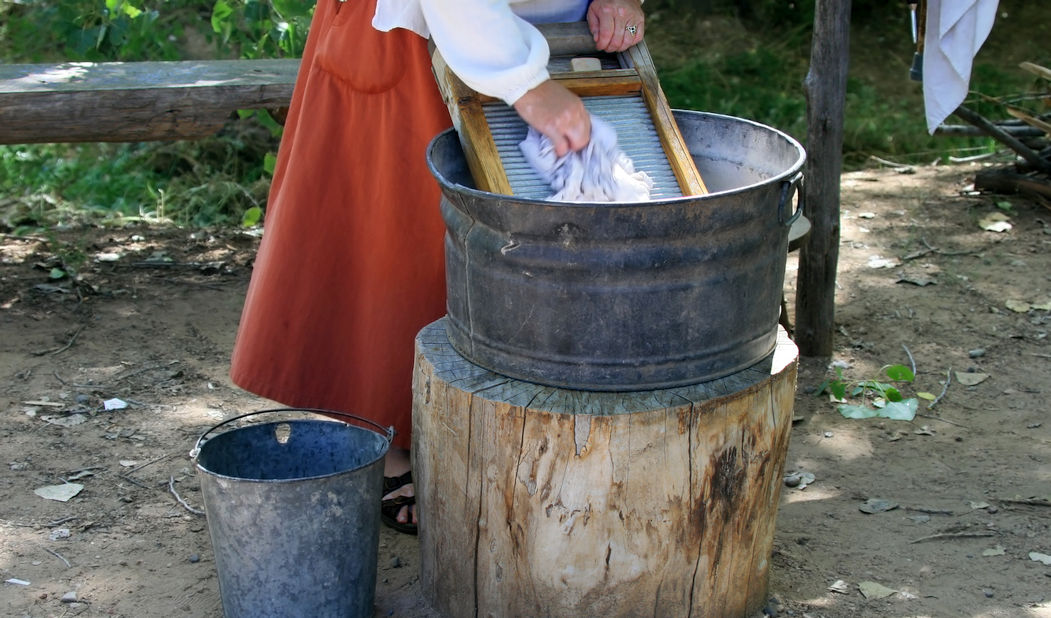Gentleness of Action Testing
You can order MA 5-hole test pieces and COSMO embroidery fabric at the end of this page.
In partnership with FTT of Switzerland wfk presents:
The Gargoyle Concept: Test Materials with a ‘real world’ behaviour
Measuring the Behaviour of Washing Machines: For General Cleaning and Gentleness of Action (GoA)
Indigo dyed denim (Blue Jeans) have proven to be good surrogates to measure GoA and general cleaning in washing:
 | Abrasion and Pilling during Washing In washing processes, friction or "rubbing" - fabric to fabric and fabric to drum - is necessary for cleaning surface soil and - in the case of blue jeans - also removes unfixated dyestuff.But friction during a washing process is also a major cause for mechanical defects on washed goods. This is commonly called abrasion or pilling. Whether washing friction will finally cause abrasion or pilling, depends mainly on the construction of the fabric and the yarn used. |
 | An example: After a couple of washes the undyed white fibres inside a denim yarn within Blue Jeans becomes visible. This occurs particularly where the mechanical action ("rubbing") is tougher - like at edges, folds or sewings. This kind of damage happens to all garments, but it‘s not so easy visible on "fully dyed" yarns. Therefore, ring dyed indigo fabrics (or to be more precise, yarns) are a perfect surrogate to measure abrasion effects. |
 | Compressing / Decompression Another major influence in washing is the compressing/ decompressing (C/D) of the textiles during the washing pro-cess. C/D helps to solve (or sweep away) the dirt and the (un)fixated dyestuff on the fabric and helps to exchange the dirty washing liquor with fresh. Very likely C/D is the most important part for cleaning! However C/D also causes mechanical strain on textiles with detrimental effects, although these are less than those caused by abrasion. |
Testmaterials, when designed expertly, behave like real textiles and are “closest to reality” of washing behaviour. Denim is a good example for what the consumer sees. Denim demonstrates the effects of washing, both positive (cleaning through “rubbing”/ squeezing) and negative (defects – in this case abrasion – and washout of dyestuff) aspects.
But unfortunately “Blue Jean” denim is not a great fabric for reliable testing, since this kind of dyeing is neither very good repeatable by the manufacturer (a fact which the fashion world likes, since jeans look than so individual) nor is it reproducible due to the nature of indigo dyestuff and the cotton itself. Every consumer knows that blue jeans do not have the “washdown look” after only a single wash. They need several washes or have to be industrially pre-washed to achieve such washdown effects. Another disadvantage for using actual indigo dyed denim for testing, is that marking “folds” happen randomly – or sometimes not at all. Great for fashion, but bad for testing.
Abrasion (or sometimes pilling) and C/D effects occur for all textiles when washed, even though “modern and well designed textiles” may not show it so dramatically. FTT has succeeded with the GARGOYLE line of products, having developed a line of test materials that demonstrate the positive, real world aspects of the Blue Jeans with the reality and needs of testing.
The GARGOYLE Concept (Gargoyles)
The GARGOYLE concept demonstrates the general behaviour of a washing machine with respect to cleaning and gentleness of action to washed items as close as possible to reality!
Of course every real textile or garment reacts differently to a wash. Some show faster, some show slower a (negative) influence to their structure. That is a fact we only can analyse when we test a specific textile. And the same is true for real dyeings and real stains. Dyeings can be better or worse. Stains and soils come from many sources. Some may be removed by specific ingredients in a detergent, such as enzymes, bleaching agents and other additives. Or some can be removed simply by the mechanics and the temperature of the wash cycle. So, specific soils and stains and specific dyestuffs need a specific solution.
A washing machine is quasi a reactor who should give the chemicals (incl. the water) and the temperature the best possible premises and help with it‘s mechanical action to do the best possible cleaning job. So the design criteria for the GARGOYLE line of testmaterials is to determine:
- Which machine (program) is more or less gentle to all washed items.
- Which machine (program) has the highest influence to the general cleaning of all washed items.
- And to build a basis to show the advantages of an additional treatment or chemical used in a washing process.
and with the different GARGOYLE products these influences can be shown more individually than today.
MA 5-hole test pieces & COSMO embroidery fabric
MA 5-hole test pieces as required e.g. for AHAM HLW-1 testing are now available as wfk products, approx. 40 cm x 40 cm) as well. We will be happy to provide you with a quotation offering MA test pieces from DTI or wfk.
-

COSMO embroidery fabric
COSMO embroidery fabric, 5 m roll, width approx. 90 cm, 100 % cotton, approx. 226g/m²
SKU: COSMO Width/Size 90 cm approx. Area Weight 226 g/m²
-

IWS-Wool SM12
Wool shrinkage test fabric IWS-Wool SM12, width 144 cm, 1 piece = 12 samples
SKU: TEST 318 Width/Size 144 cm
-

MA test piece (Danish)
MA test piece (Danish) 24 cm x 24 cm, DTI MA, 100 % cotton
SKU: 11800 Width/Size 24 cm x 24 cm
-

MA test piece (Danish)
MA test piece (Danish) 40 cm x 40 cm, domestic washing, DTI MAHH, 100 % cotton
SKU: 11801 Width/Size 40 cm x 40 cm
-

MA test piece (wfk)
MA test piece (wfk) 40 cm x 40 cm, domestic washing, WFK MAHH, 100 % cotton. This product is equivalent to the Danish MA test pieces and made to the same specifications
SKU: 11803 Width/Size 40 cm x 40 cm
-

Mechanical Action test pieces
Mechanical Action test pieces 21,5 cm x 22,5 cm (small), style: wfk US 5 hole MA cloth, 100 % cotton
SKU: 11804 Width/Size 21,5 cm x 22,5 cm


